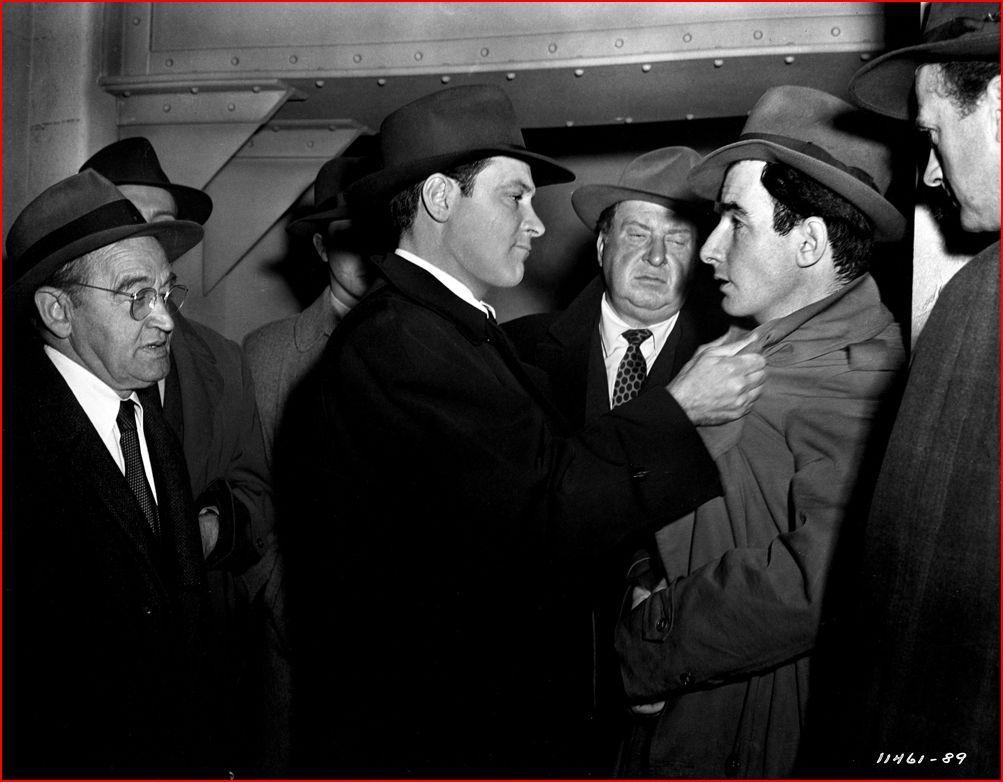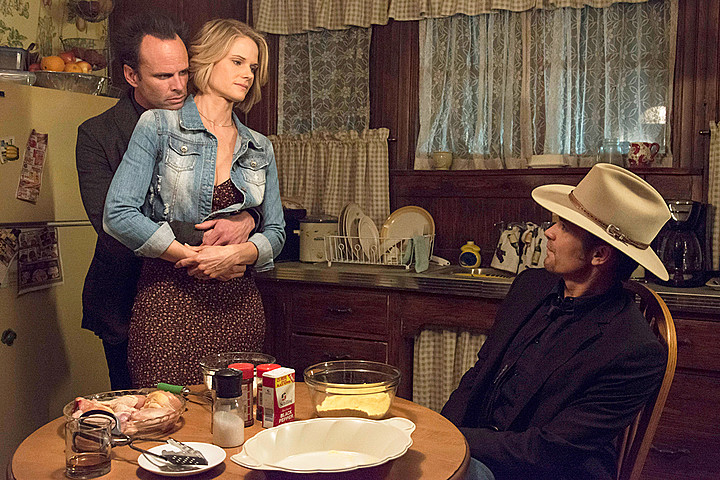Written by Sydney Boehm
Directed by Rudolph Matté
U.S.A., 1950
When Joyce Williecomb (Nancy Olson), humble assistant to wealthy businessman Henry Muchison (Herbert Heyes), takes the train to Chicago, little does she know that the next few days will prove to be the greatest test of patience and nerves she has ever known. Shortly after the train departs for its destination, it is halted in order for two suspicious looking gentlemen to embark. Convinced something is amiss, Joyce, upon arriving in Chicago, immediately alerts the security at Union Station of the two mystery men, sending railroad police detective William Calhoun (William Holden) into action. Much to Joyce’s surprise and horror, it turns out that targets have in fact kidnapped her employer’s blind daughter, Lorna (Allene Roberts), to whom she had said goodbye mere hours ago. Now demanding a ransom, a game of cat and mouse within the confines of Union Station commences as detective Calhoun, with the help of inspector Donnelly (Barry Fitzgerald), sifts through the series of third parties used by the kidnappers to make their demands known.
Whereas in the previous column entry (Friday Noir #117) wherein He Walked by Night earned its share of criticism for failing to balance its obligations to thrill with its procedural aspirations, Union Station serves as a superior example as to how a film can juggle its disparate yet mutually complementary aspects to generate an entertaining if nevertheless methodical motion picture. Several docu-noir ingredients are present even though Sydney Boehm’s screenplay is not directly adapted from a real life event. The overall experience proves very rewarding because not only is the viewer privy to the planning stages exercised by the authorities but is allowed to engage with the characters, thus benefiting of superior drama when action erupts.
As far as the weighed importance of the procedural angle is concerned, Union Station dedicates a solid amount of screen time to sharing the planning stages and deliberations that occur behind the scenes. Such moments are given an extra bit of flare insofar as the two leading individuals trying to crack the case represent different departments of the law yet share mutual respect for one another. On the one hand there is Detective Lt. Calhoun who works specifically for the railroad company. Whatever happens in the station or on the tracks falls under his jurisdiction. When circumstances become even more pressing, inspector Donnelly of the police is brought in to help out. Although admiration for each other’s accomplishments is obvious, they do not always see eye to eye when conjuring up the next step to take. This light tension (which admittedly does not endure for very long) encourages some character development, meaning that by the time the stakes are at their highest, not only does the viewer understand why things are happening, they also understand and appreciate the personalities involved.
On the topic of personality, Union Station in fact showcases a trio of wholly unique and appreciable characters to lead the show. Calhoun is the younger detective, confident in his ways, working the case like a hawk that has spotted his prey and prepares to swoop in for the kill. Extremely dedicated to his job, he sometimes lacks the judgment to make decisions based on stronger moral fiber. Blinded by the rule book at times, his eyes are opened up to the more human risks involved by Joyce, who of course is tremendously invested in the event given her emotional attachment to the family befallen by the tragedy. Her candidly emotional pleas for moral reasoning are what kickstart a shift in Calhoun’s perception of how the operation should be handled. She does so with force, but never so much as to become obnoxious. Olson plays the part smartly enough to make it understood that her sternness is out of love. Calhoun’s change of attitude is also aided by the guidance of inspector Donnelly, a man who speaks from experience. All three leads are excellent in their respective roles (Holden and Olson, reuniting after Sunset Boulevard, have nice chemistry), especially Barry Fitzgerald, playing the up the part of the warm, Irish elder partner who can either play it friendly, cool or rough on a dime. For the latter, no need to look any further than the scene in which the police hold one of the kidnappers in their mitts at the train station. When the accomplice refuses to reveal information, Donnelly casually tells his men to toss the man onto the tracks and make it look like accidental.
The majority of the action is set at the titular Union Station (although the story occurs in Chicago, Los Angeles’ station was employed as the major film set). Director Rudolph Matté makes excellent use of the location, wrestling logistics of a crowded area to perfection and, just as importantly, making the geography of the area very clear to understand for the audience. Message handoffs and the tailing of potential suspects are perfectly captured to convey the sense of danger and excitement of having hostage negotiations essentially transpire via intermediaries within the confines of a train station. Rather than become dull due to overuse, the locale consistently invigorates filmmakers’ creativity to draw new, different ways for the action to happen.
Incidentally enough, Union Station is yet another movie that ends in a city’s underground passages. This time around the climax has Calhoun give chase to the ringer leader below the station and into a section beneath street level where construction is being done as the kidnap victim is awaiting her fate in a trolley. Blind, she has no way of knowing which direction leads to her escape, not to mention that electrical wiring can spell her doom providing she missteps. In what might be a bit of irony on the part of the filmmakers, the chase between Calhoun and the villain Joe Beacon (Lyle Bettger) follows the track set up for the aforementioned trolley. Even when underground it seems as though the protagonist’s ordeals always relate to locomotive and railways in some capacity.
Matté’s picture does miss the mark in a couple of important respects however. Lyle Bettger as the chief villain is shortchanged. Bettger is a good actor, more than capable of demonstrating a mean streak, which he does at times in Union Station, but overall his role is limited, to say nothing of that of the character’s main squeeze played by Jan Sterling, more decorative than anything else. What’s more, Lorna herself, the girl at the center of all the tension, is, sadly, not very easy to take a liking to. It is understandable that under her circumstances, not every one can remain level headed. In her defence, she is worried for her life. Even so, Allene Roberts plays up the fear factor to the maximum degree, overbearingly so. Rather than earn empathy, she becomes downright annoying after a while.
Such criticisms are insufficient to drag the picture down into the pits though. Rudolph Matté is a director fans can invest their trust into more often than not. Even those unfamiliar with his oeuvre will surely find the great William Holden’s presence reassuring, and will be pleasantly surprised by Barry Fitzgerald. It is as good a chase film as it is a procedural, with a handful of strong characterizations to boot.
-Edgar Chaput






